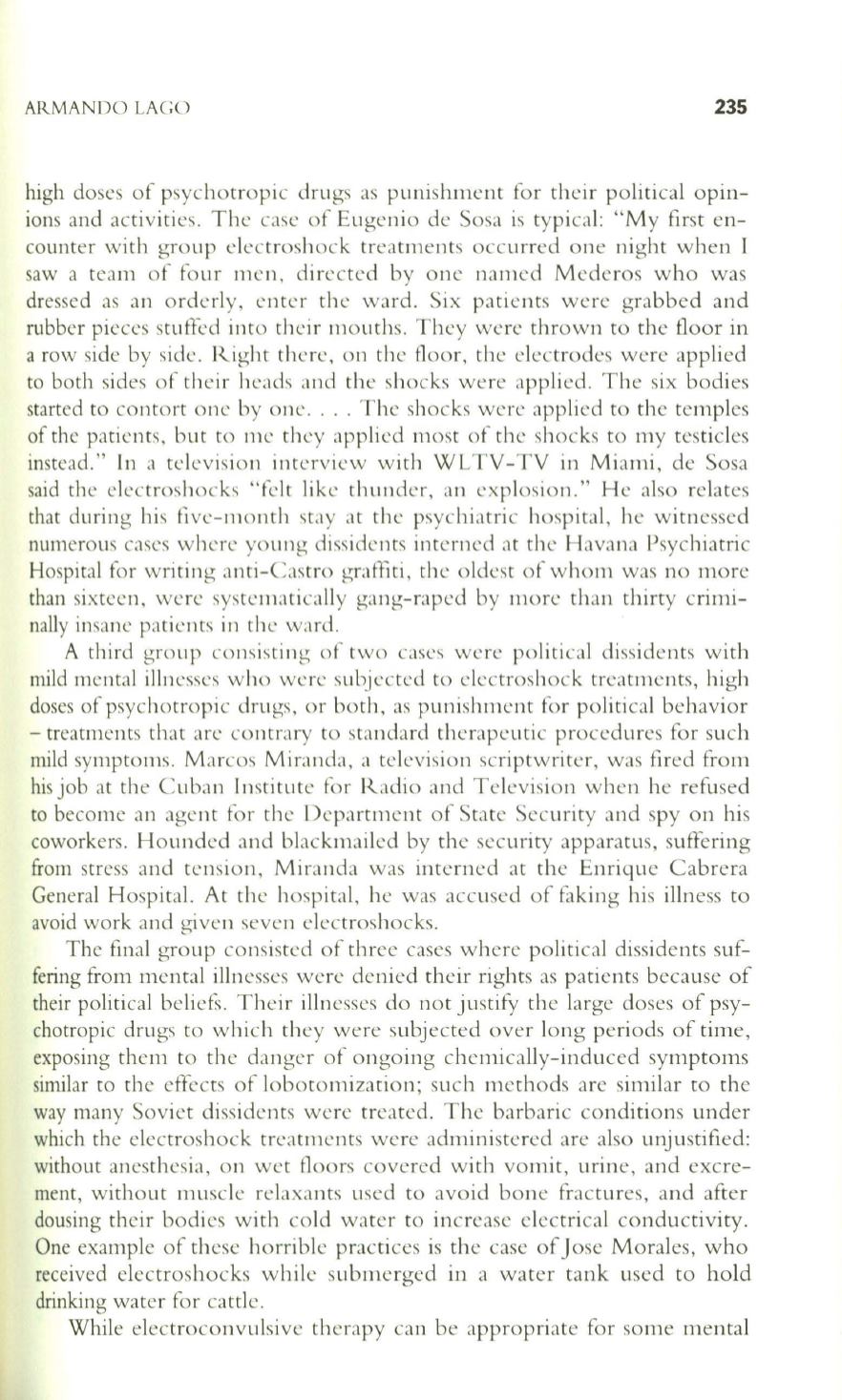
ARMANDO LACO
235
high doses of psychotropic drugs as punishment for their political opin–
ions and activities. The case of Eugenio de Sosa is typical: "My first en–
counter with group electroshock treatments occurred one night when I
saw a team of four men, directed by one named Mederos who was
dressed as an orderly, enter the ward. Six patients were grabbed and
rubber pieces stuffed into their mouths. They were thrown to the floor in
a row side by side. Right there, on the floor, the electrodes were applied
to both sides of their heads and the shocks were applied. The six bodies
started to contort one by one.... The shocks were applied
to
the temples
of the patients, but to me they applied most of the shocks to my testicles
instead." In a television interview with WLTV-TV in Miami, de Sosa
said the electroshocks "felt like thunder, an explosion ." He also relates
that during his five-month stay at the psychiatric hospital, he witnessed
numerous cases where young dissidents interned at the Havana Psychiatric
Hospital for writing anti-Castro graffiti, the oldest of whom was no more
than sixteen, were system:1tically gang-raped by more than thirty crimi–
nally insane patients in the ward.
A third group consisting of two cases were political dissidents with
mild mental illnesses who were subjected to electroshock treatments, high
doses of psychotropic drugs, or both, as punishment for political behavior
- treatments that arc contrary to standard therapeutic procedures for such
mild symptoms. Marcos Miranda, a television scriptwriter, was fired from
his job at the Cuban Institute for
I~adio
and Television when he refused
to become an agent for the Department of State Security and spy on his
coworkers. Hounded and blackmailed by the security apparatus, suffering
from stress and tension, Miranda was interned at the Enrique Cabrera
General Hospital. At the hospital, he was accused of faking his illness to
avoid work and given seven electroshocks.
The final group consisted of three cases where political dissidents suf–
fering from mental illnesses were denied their rights as patients because of
their political
belief.~.
Their illnesses do not justifY the large doses of psy–
chotropic drugs to which they were subjected over long periods of time,
exposing them to the danger of ongoing chemically-induced symptoms
similar to the effects of lobotomization; such methods are similar to the
way many Soviet dissidents were treated. The barbaric conditions under
which the electroshock treatments were administered are also unjustified:
without anesthesia, on wet floors covered with vomit, urine, and excre–
ment, without muscle relaxants used to avoid bone fractures, and after
dousing their bodies with cold water to increase electrical conductivity.
One example of these horrible practices is the case ofJose Morales, who
received electroshocks while submerged in a water tank used to hold
drinking water for cattle.
While electroconvulsive therapy can be appropriate for some mental


